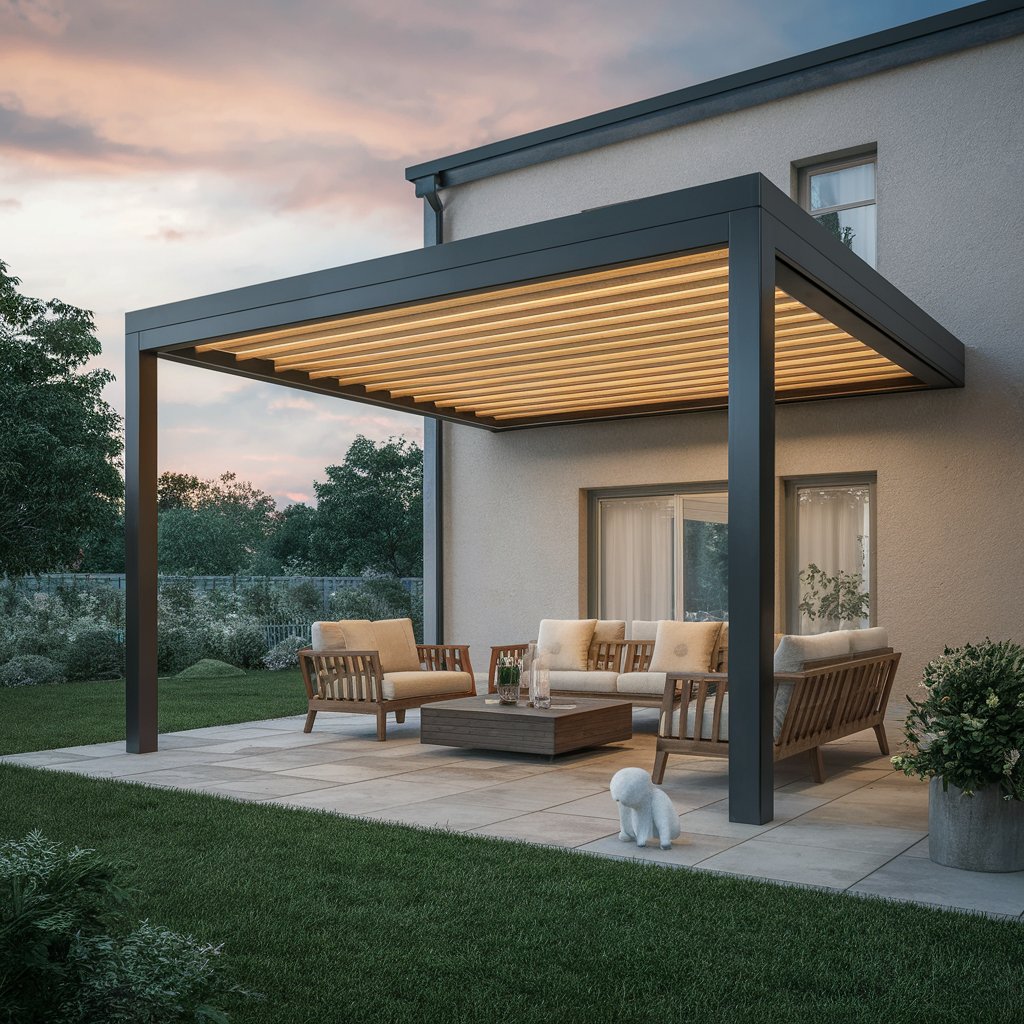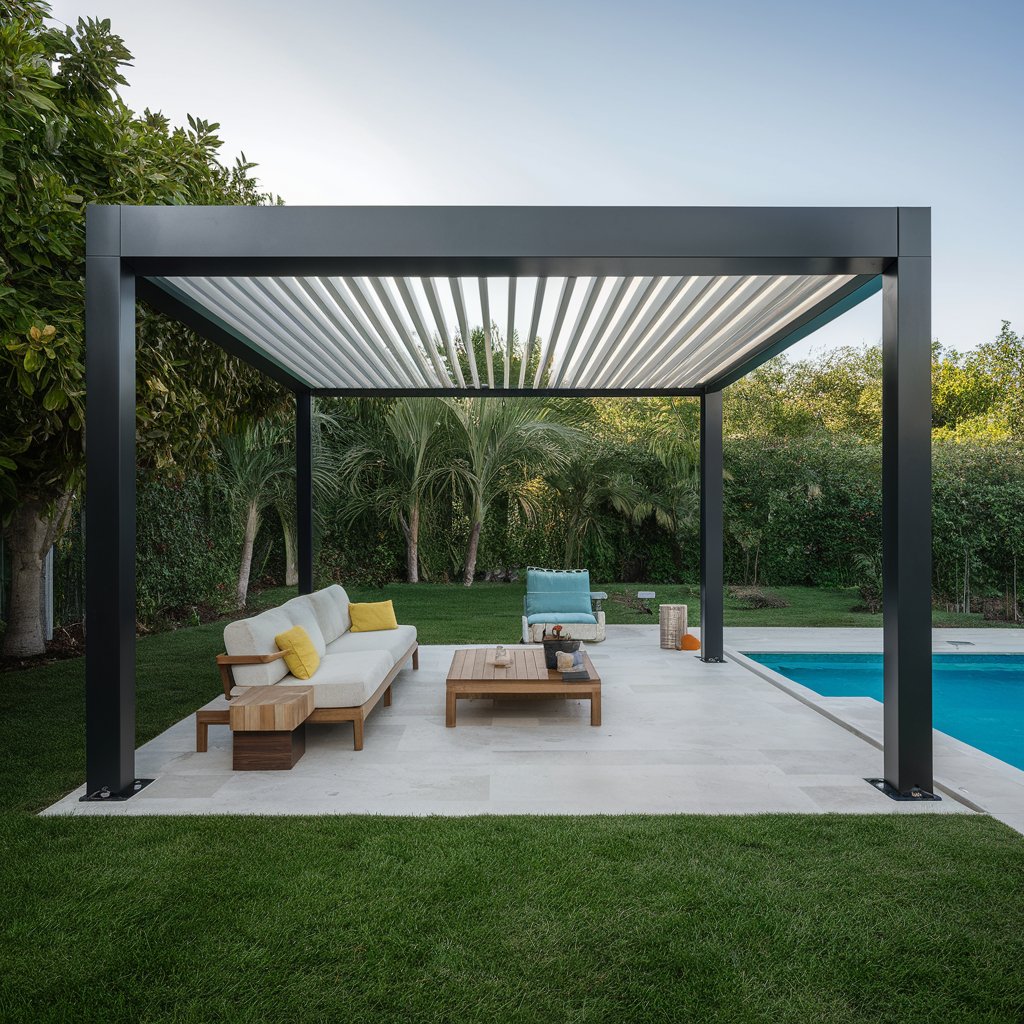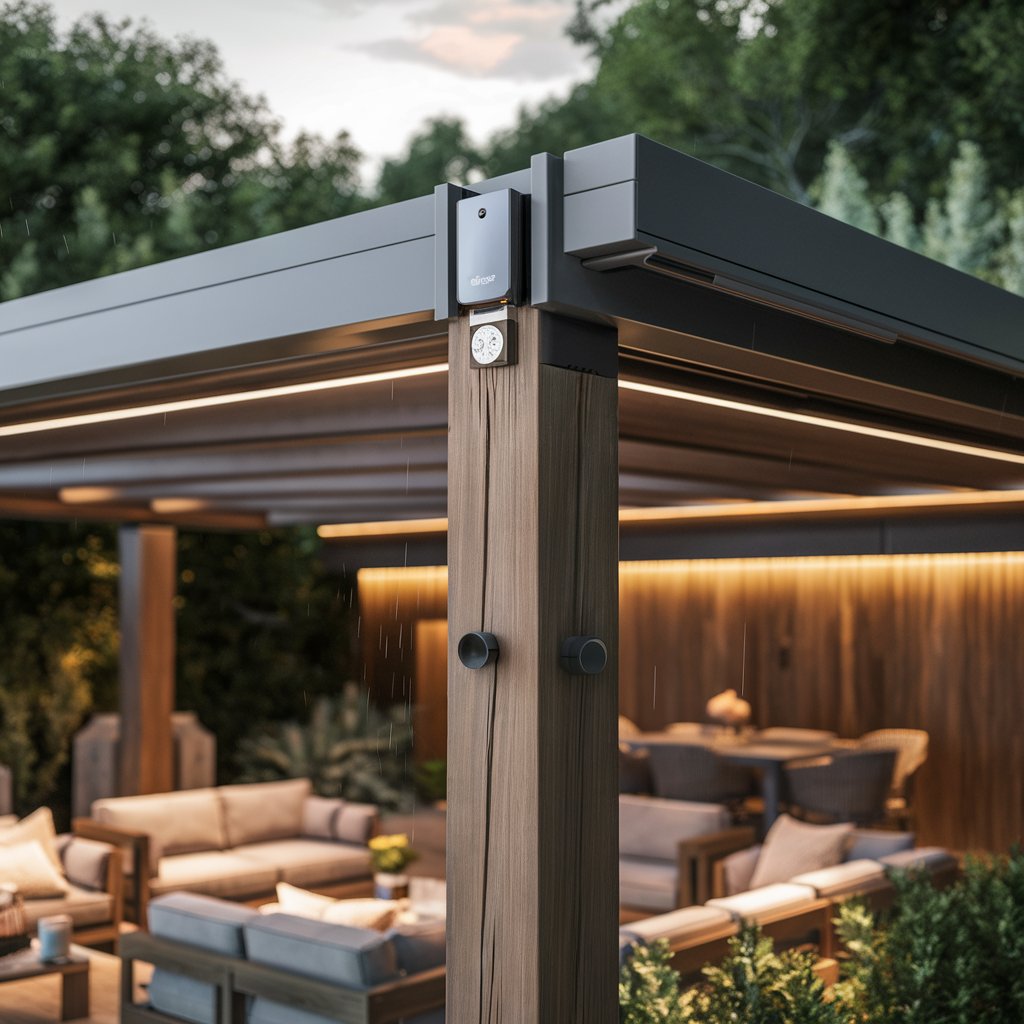A villa pergola is more than just an outdoor structure; it is a versatile and elegant feature that can transform the ambiance and functionality of any outdoor space. It serves as a focal point, providing shade, comfort, and a touch of sophistication. In this comprehensive guide, we will explore the various aspects of villa pergolas, including their design, construction, and decoration, ensuring you have all the information you need to create a stunning pergola for your villa.

1. Understanding Villa Pergolas
A pergola is an outdoor garden feature forming a shaded walkway, passageway, or sitting area. It consists of vertical posts or pillars that usually support cross-beams and a sturdy open lattice. Often, pergolas are used to support climbing plants that can create a beautiful natural canopy.
Villa pergolas, in particular, are designed to complement the architecture and aesthetics of a villa. They can range from simple, minimalist designs to elaborate, ornate structures, depending on the style of the villa and the preferences of the homeowner.
2. Designing a Villa Pergola
Designing a villa pergola involves several considerations to ensure it enhances the overall look and feel of your outdoor space. Here are some key factors to keep in mind:
2.1. Purpose and Functionality
Before you begin designing, it is essential to determine the primary purpose of your pergola. Will it be used for dining, lounging, entertaining, or as a garden feature? Understanding the intended use will help guide the design process.
2.2. Location and Orientation
The location of your pergola will significantly impact its design and functionality. Consider the following when choosing the site:
- Sunlight: Position the pergola to provide the desired amount of shade. If you want to block the midday sun, orient it east-west.
- View: Take advantage of scenic views and ensure the pergola enhances them rather than obstructs them.
- Privacy: If privacy is a concern, consider adding screens or climbing plants to create a secluded retreat.
2.3. Size and Scale
The size of your pergola should be proportionate to the villa and the outdoor space. A pergola that is too large may overwhelm the area, while one that is too small might not provide the desired impact. Measure the space carefully and consider the following:
- Height: Ensure the pergola is tall enough to provide adequate clearance and not feel cramped.
- Width and Length: These dimensions should accommodate furniture and allow for comfortable movement within the space.
2.4. Style and Materials
The style of your villa pergola should complement the architectural style of your villa. Common styles include:
- Traditional: Features ornate details, such as columns and intricate latticework.
- Modern: Emphasizes clean lines, minimalism, and often incorporates metal or composite materials.
- Mediterranean: Often made of wood or stone, with rustic, earthy tones and climbing plants.
Materials commonly used for pergolas include:
- Wood: Offers a natural look and can be stained or painted. Common types include cedar, redwood, and teak.
- Metal: Provides a modern look and is highly durable. Aluminum and steel are popular choices.
- Vinyl: Low-maintenance and available in various styles and colors.
3. Constructing a Villa Pergola
Once you have a design in mind, it’s time to move on to construction. Building a pergola involves several steps, from preparing the site to the final touches.
3.1. Preparing the Site
- Permits and Regulations: Check with local authorities to determine if you need a permit to build your pergola. Ensure your design complies with any building codes or regulations.
- Clearing the Area: Remove any obstacles, such as plants, rocks, or debris, from the construction site.
- Measuring and Marking: Mark the location of the posts using stakes and string to ensure accuracy.
3.2. Building the Structure
- Setting the Posts: Dig holes for the posts, ensuring they are deep enough to provide stability. Set the posts in concrete and allow them to cure.
- Attaching the Beams: Once the posts are secure, attach the main beams that will support the roof. Ensure they are level and properly aligned.
- Adding Cross-Beams and Lattice: Install the cross-beams perpendicular to the main beams, followed by the lattice or rafters. This will form the open roof structure of the pergola.
3.3. Final Touches
- Staining or Painting: If using wood, consider staining or painting it to protect against the elements and enhance its appearance.
- Anchoring: Ensure the pergola is securely anchored to the ground to prevent movement or damage from wind.
- Lighting: Install outdoor lighting to enhance the ambiance and functionality of the pergola at night.
4. Decorating a Villa Pergola
Decorating your villa pergola is where you can truly personalize the space and make it your own. Here are some ideas to inspire you:
4.1. Furniture
Choose outdoor furniture that complements the style of your pergola and provides comfort and functionality. Options include:
- Dining Sets: Ideal for alfresco dining, with tables and chairs designed for outdoor use.
- Lounge Furniture: Comfortable seating options such as sofas, chairs, and chaise lounges for relaxation.
- Hammocks and Swings: Add a touch of whimsy and comfort with hanging hammocks or swings.
4.2. Plants and Greenery
Incorporating plants can enhance the beauty and tranquility of your pergola. Consider the following:
- Climbing Plants: Grow vines, such as wisteria, jasmine, or ivy, to create a natural canopy.
- Potted Plants: Place potted plants around the pergola for added greenery and color.
- Hanging Baskets: Suspend hanging baskets filled with flowers or trailing plants from the beams.
4.3. Textiles
Outdoor textiles can add color, texture, and comfort to your pergola. Options include:
- Cushions and Pillows: Add cushions and pillows to seating areas for comfort and style.
- Curtains: Install outdoor curtains for shade, privacy, and a touch of elegance.
- Rugs: Use outdoor rugs to define the space and add warmth underfoot.
4.4. Lighting
Outdoor lighting can transform your pergola into a magical space at night. Consider these options:
- String Lights: Drape string lights across the beams for a festive and cozy atmosphere.
- Lanterns: Place lanterns on tables or hang them from the beams for a classic look.
- LED Lights: Install LED lights for energy-efficient and versatile lighting options.
4.5. Accessories
Accessorize your pergola to reflect your personal style and enhance its functionality. Ideas include:
- Fire Pits: A fire pit can provide warmth and a focal point for gatherings.
- Outdoor Heaters: Extend the use of your pergola into cooler months with outdoor heaters.
- Water Features: Add a fountain or small pond nearby for a soothing and tranquil atmosphere.
5. Maintenance of a Villa Pergola
Proper maintenance is essential to keep your villa pergola looking beautiful and functioning well for years to come. Here are some tips:
5.1. Regular Cleaning
- Wood: Clean wooden pergolas with a mild detergent and water. Consider power washing to remove stubborn dirt or mildew.
- Metal: Wipe down metal pergolas with a damp cloth and mild detergent to prevent rust and corrosion.
- Vinyl: Clean vinyl pergolas with soapy water and a soft brush to remove dirt and grime.
5.2. Inspections and Repairs
Regularly inspect your pergola for any signs of damage or wear. Look for:
- Loose or Damaged Beams: Tighten any loose bolts or screws and replace damaged beams.
- Rot or Decay: Check wooden pergolas for signs of rot or decay and address issues promptly.
- Rust: Treat any rust spots on metal pergolas to prevent further corrosion.
5.3. Protective Treatments
- Wood: Apply a sealant or stain to protect wooden pergolas from moisture and UV damage.
- Metal: Consider painting or applying a rust-resistant coating to metal pergolas.
- Vinyl: While low-maintenance, vinyl pergolas can benefit from periodic treatments to protect against UV damage.
6. Inspiration and Trends
Staying up-to-date with current trends and gathering inspiration can help you create a pergola that is both stylish and functional. Here are some popular trends and ideas:
6.1. Eco-Friendly Designs
Incorporate sustainable materials and practices into your pergola design. Options include:
- Reclaimed Wood: Use reclaimed or recycled wood for a rustic and eco-friendly look.
- Solar Lighting: Install solar-powered lights to reduce energy consumption.
- Native Plants: Choose native plants for landscaping to support local ecosystems.
6.2. Modern Minimalism
Embrace a minimalist approach with clean lines and simple designs. Features include:
- Neutral Colors: Opt for a neutral color palette with shades of white, gray, and black.
- Sleek Materials: Use materials like metal and composite for a contemporary look.
- Integrated Seating: Incorporate built-in seating for a seamless and uncluttered appearance.
6.3. Mediterranean Influence
Draw inspiration from Mediterranean architecture and design. Characteristics include:
- Terracotta and Stone: Use terracotta pots and stone accents for a rustic charm.
- Earthy Tones: Choose warm, earthy colors like terracotta, olive, and mustard.
- Lush Vegetation: Incorporate lush, green plants and climbing vines for a natural look.
6.4. Technology Integration
Integrate technology to enhance the functionality and convenience of your pergola. Options include:
- Smart Lighting: Install smart lighting systems that can be controlled via smartphone or voice commands.
- Sound Systems: Add outdoor speakers or a sound system for music and entertainment.
- Retractable Roofs: Consider a retractable roof for flexibility in controlling sunlight and shade.
7. Case Studies: Villa Pergola Projects
Examining real-life examples can provide valuable insights and inspiration for your own pergola project. Here are a few case studies:
7.1. The Mediterranean Retreat
A villa in southern Italy features a pergola that seamlessly blends with the Mediterranean landscape. Key features include:
- Materials: The pergola is constructed from locally sourced stone and wood.
- Design: It features arched beams and ornate details that reflect traditional Mediterranean architecture.
- Plants: Climbing vines, such as bougainvillaea and jasmine, create a lush, fragrant canopy.
7.2. The Modern Oasis
A contemporary villa in California showcases a sleek, minimalist pergola. Highlights include:
- Materials: The pergola is made of powder-coated aluminum with a sleek, matte finish.
- Design: Clean lines and a flat roof create a modern, streamlined look.
- Features: Integrated LED lighting and built-in seating provide functionality and style.
7.3. The Rustic Retreat
A countryside villa in France features a charming, rustic pergola. Notable aspects include:
- Materials: Reclaimed wood and wrought iron give the pergola a vintage feel.
- Design: The pergola has a gabled roof and intricate latticework.
- Décor: Antique furniture, potted plants, and hanging lanterns enhance the rustic ambiance.
8. Conclusion
A villa pergola is a versatile and elegant addition to any outdoor space. By carefully considering design, construction, and decoration, you can create a pergola that enhances the beauty and functionality of your villa. Whether you prefer a traditional, modern, or rustic style, there are endless possibilities to explore. With proper maintenance and thoughtful design, your villa pergola will provide years of enjoyment and become a cherished part of your home.
4o


